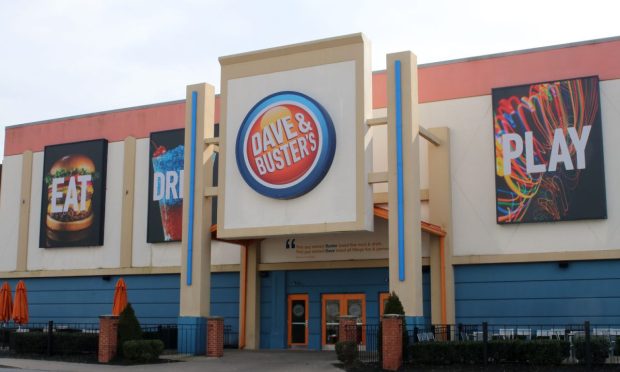Dave & Buster’s Leverages Digital Data to Upgrade In-Person Experiences

As restaurants explore the possibilities of consumer data, Dave & Buster’s is enhancing the in-store experience.
The dining and entertainment chain said during its latest earnings report Tuesday (March 28) that it is using consumer data to personalize the in-restaurant journey.
Dave & Buster’s, which has more than 200 locations across the country, has served as something of an indicator for how the on-premises channel is faring since 2020, as its model, which combines the bar and restaurant experience with arcade games, televised sports events and more, depends on consumers being physically present.
The brand shared on its latest earnings call how its digital offerings such as its loyalty program are enabling the company to bring eCommerce-like personalization to that on-premises experience.
“It’s that intersection of the human service model and the technology model where we’re maniacally focused on enabling the hospitality experience,” CEO Chris Morris told analysts. “We’re able to stay more engaged with the guests throughout every step of that journey, then that gives us the advantage of being able to collect a tremendous amount of data on those particular guests to be able to tailorize our service approach just to meet their specific needs.”
This focus on the in-store experience is especially key for restaurants of all kinds, given the ongoing prevalence of on-site ordering. Findings from PYMNTS’ study “The 2022 Restaurant Digital Divide: Food Aggregators Find Their Footing,” which draws from a survey of more than 2,200 U.S. consumers, reveal that 78% of diners’ most recent orders were made inside the restaurant, paying a human employee.
Dave & Buster’s is not the only brand looking to personalize its in-person customer service. For instance, fast-casual giant Panera Bread recently announced that it is rolling out Amazon’s pay-by-palm capabilities to loyalty members, giving in-store employees the ability to greet guests by name and see their order history.
These moves to personalize the on-site experience build on restaurants’ efforts in recent years to tailor the digital experience to guests’ individual preferences and habits.
For instance, Chipotle Mexican Grill, which has nearly 3,200 locations across five countries, said on its latest earnings calls that more than 60% of loyalty program offers in 2022 were personalized, and the company aims to increase that share in the future in an effort both to increase the frequency of existing customers and to bring new diners into the digital fold.
In a recent interview with PYMNTS, Quick Chadwick, chief marketing officer of fast-casual juice and food bar chain Clean Juice, noted that restaurants are racing to innovate on their data capabilities, using customer information to personalize the experience with targeted recommendations, driving sales and loyalty.
In addition to gathering customer data, mobile apps and loyalty programs also enable restaurant brands to maintain ongoing communication with their customers and to offer more convenient ordering and payment options.
“We are more aggressively leveraging D&B Rewards and our growing loyalty database of 4.5 million members to efficiently communicate with our guests across all occasions,” Morris said. “We are building out our data and digital innovation capabilities to drive relevancy, media efficiency and tech-enabled hospitality with the Dave & Buster’s brand.”
In fact, nearly half of all full-service restaurant (FSR) customers are engaging with programs of this kind. PYMNTS’ study “Digital Divide: Restaurant Subscribers And Loyalty Programs,” which drew from responses from more than 2,000 U.S. adults who regularly purchase food from restaurants, found that 44% of consumers use loyalty programs at FSRs, and 38% do so at quick-service restaurants (QSRs).

